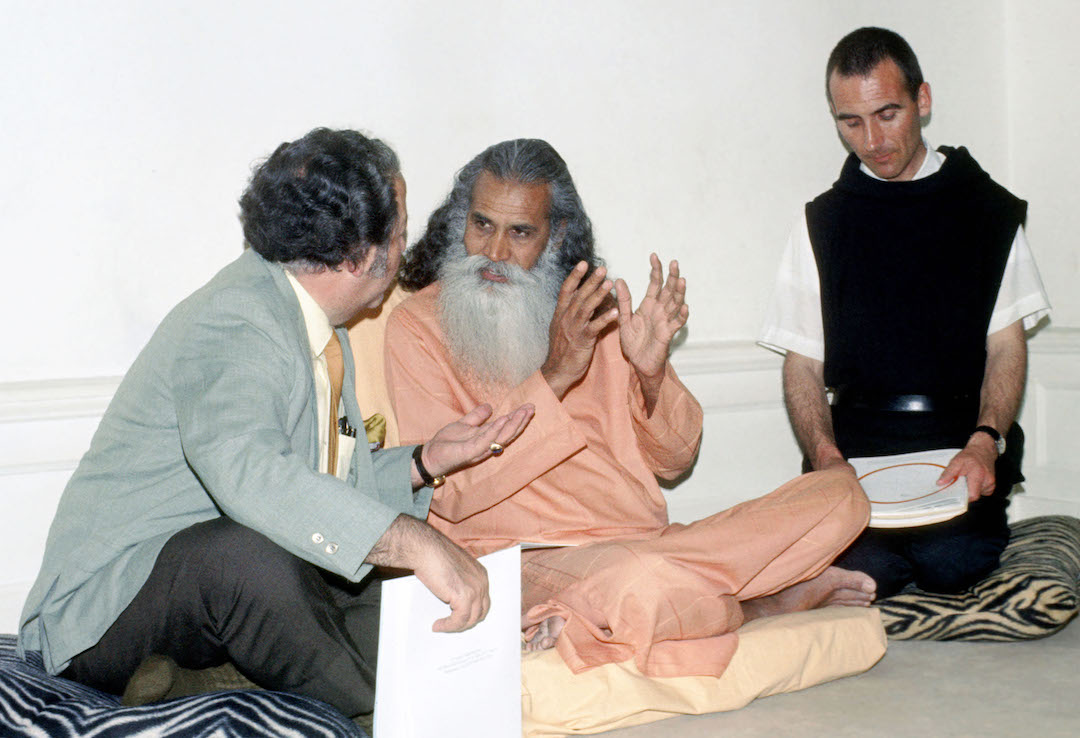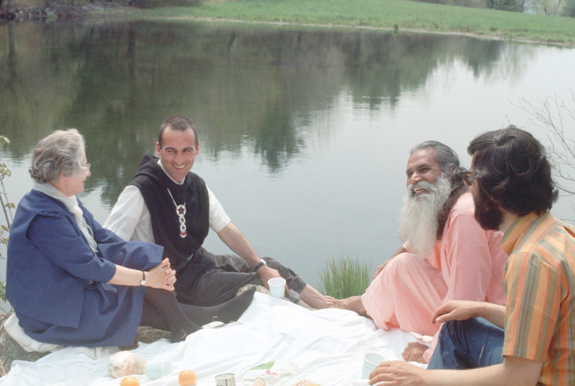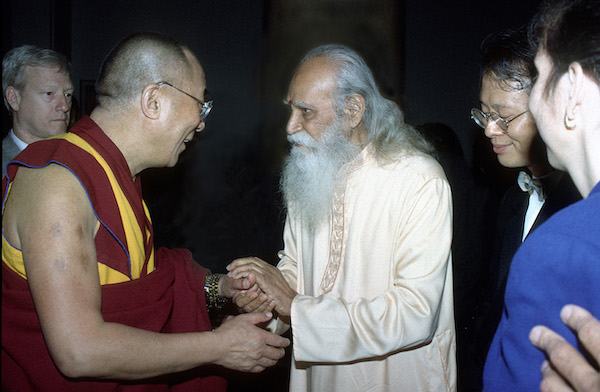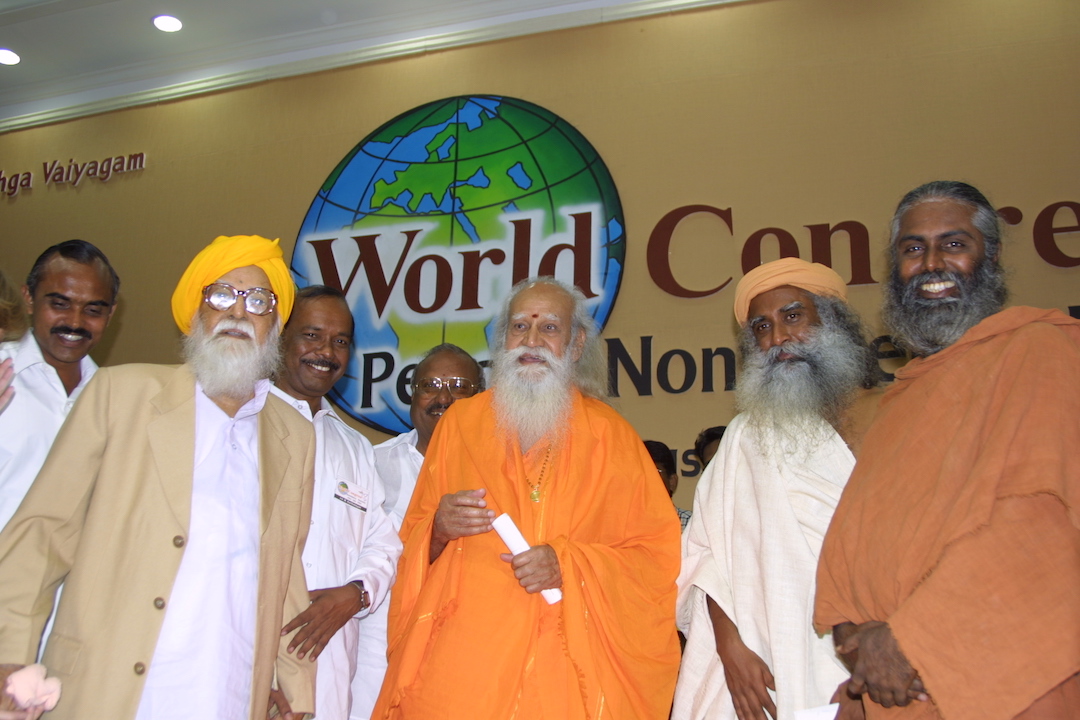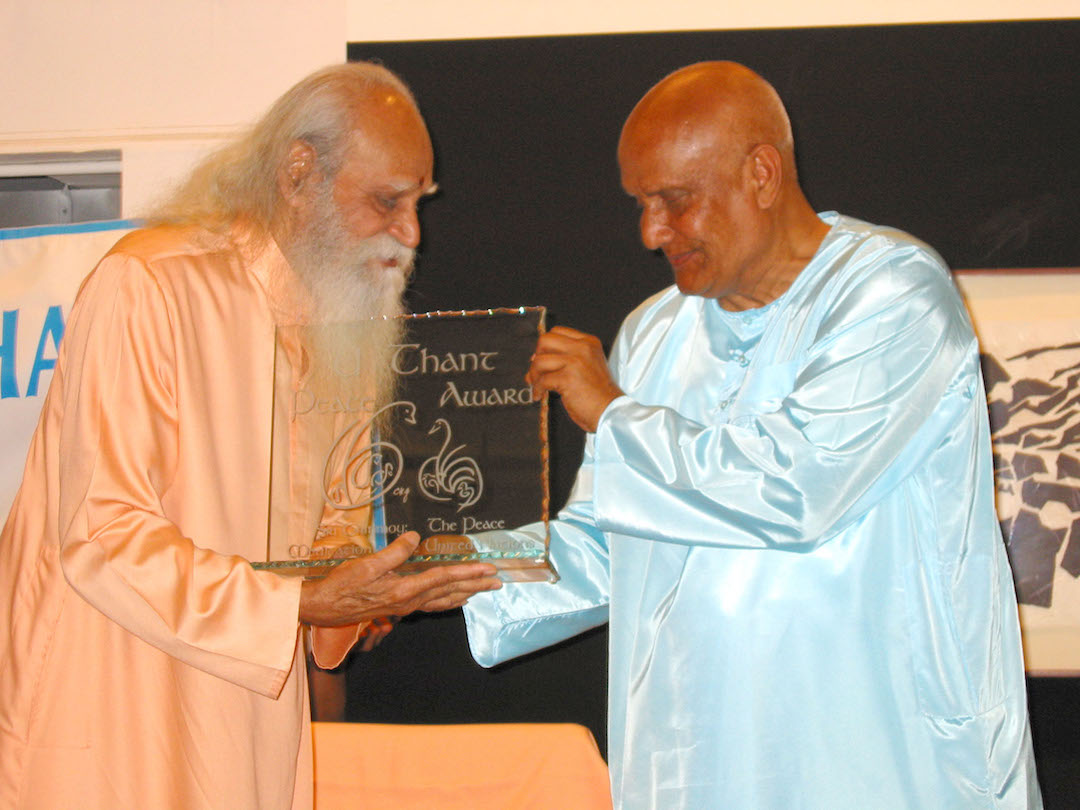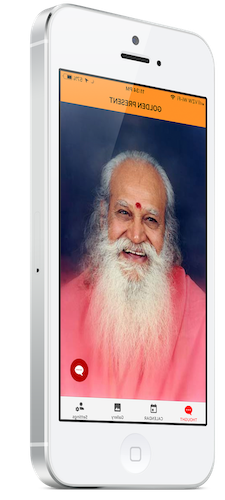SWAMI SATCHIDANANDA WAS A LEADING PROPONENT OF INTERFAITH UNDERSTANDING
Interfaith Visionary
Even as a young boy, Swami Satchidananda could not understand why people were divided because of caste and religion. His feelings deepened and led him to become an advocate of interfaith understanding. Soon, his motto, “Truth is one, paths are many,” became celebrated around the world. For nearly fifty years, he organized numerous interfaith programs, retreats, and conferences around the world. He built the Light Of Truth Universal Shrine, the world’s first interfaith shrine to contain altars for the major world faiths, and which honors the unity within the diversity of all faiths. In 2014, during his birth centennial year, he was recognized as an “interfaith visionary,” by the Interfaith Center of New York when he was posthumously awarded the James Parks Morton Interfaith Award.
SWAMI SATCHIDANANDA WAS A LEADING PROPONENT OF INTERFAITH UNDERSTANDING
Interfaith Visionary
Even as a young boy, Swami Satchidananda could not understand why people were divided because of caste and religion. His feelings deepened and led him to become an advocate of interfaith understanding. Soon, his motto, “Truth is one, paths are many,” became celebrated around the world. For nearly fifty years, he organized numerous interfaith programs, retreats, and conferences around the world. He built the Light Of Truth Universal Shrine, the world’s first interfaith shrine to contain altars for the major world faiths, and which honors the unity within the diversity of all faiths. In 2014, during his birth centennial year, he was recognized as an “interfaith visionary,” by the Interfaith Center of New York when he was posthumously awarded the James Parks Morton Interfaith Award.
Truth is One,
Paths are Many
In 1968, Swami Satchidananda, in collaboration with Rabbi Joseph Gelberman and Brother David Steindl-Rast, a Roman Catholic Benedictine monk, founded the Center for Spiritual Studies, in which the clergy of different faiths would meet once a month to share their dialogue. This center grew into the Yoga Ecumenical Seminar that would hold weekend retreats for the followers of different religions wishing to come together in prayer and meditation, and to share ideas. (photo: l-r, Rabbi Gelberman, Swami Satchidananda, and Br. David during Center for Spiritual Studies meeting, 1968.)
“Interfaith dialogue is designed to bring people together so that we can remember the unity behind the diversity. Sometimes people ask if the interfaith approach is an effort to have all faiths merge into one. That is not the point. If there is only one kind of flower in the garden, it is no longer a garden. Should the flowers fight about their colors, their scents, their shapes, and forms? Should they hate each other for their differences? We seem to appreciate the variety, texture, shapes, and scents of the flowers as they blend together to create a beautiful bouquet of flowers. God created all this variety for us to enjoy and for this beauty to enrich our lives. Our aim should be to understand the unity and enjoy the variety. Only by having a universal and spiritual vision can we bring positive change into the world through greater cooperation and understanding. The time has come and we cannot afford to separate ourselves and deny each other anymore; because we are aware, more than ever, that we are a global village. It’s time to understand each other better and to live as one global family.”
— Swami Satchidananda
During the many interfaith retreats and symposiums he organized, Swami Satchidananda had another innovation: the Yoga Ecumenical Service (now known as the Light Of Truth Universal Service), in which representatives of different faiths gathered together around a circular altar and performed a worship service to a central light. This light—in the form of a lit candle—was adopted as the universal symbol of the Divine. Performing the service were celebrants representing their respective faiths, and offering worship to the central light from their own faith tradition.
Swami Satchidananda was invited to serve on the advisory boards of many interfaith organizations. For over 30 years, he lent support to organizations including, the Temple of Understanding, Thanks-Giving Square, The Parliament of the World’s Religions, the International Interfaith Centre, the Interfaith Center of New York, and the United Religions Initiative.
Over the years, as Swami Satchidananda traveled around the globe, many such interfaith services were conducted. He spent time with people of all faiths and he saw a strong need for people to recognize their spiritual oneness and stop fighting in the name of God and religion. He had always dreamed of a temple which stood for this essential oneness. It wouldn’t belong to any one religion; it would be for everyone. People could come there and pray according to their own beliefs but at the same time be reminded that we all come from and return to the same Light. He began speaking of his dream. Instead of only having occasional interfaith services at retreats and conferences, a permanent place could be established where all faiths were represented, a house of God where anyone who entered could feel completely comfortable. Soon, clergy from all faiths, were drawn to his ideas and interfaith services became a central theme at large interfaith events.
In 1980, the World Thanksgiving Council named Swami Satchidananda a “Fellow of World Thanksgiving.” During the 1980s, he participated in several programs with Cardinal Arinze, the director of the Vatican’s interreligious offices. The Vatican was kept informed of Swamiji’s interfaith activities, leading to an audience with Pope John Paul II. They discussed Swamiji’s interfaith activities, his dream of a building an interfaith shrine, which was soon to become a reality. Pope John Paul II responded: “That is very good. I am so glad to hear about this and I give all my blessings and benedictions to this work.”
Swami Satchidananda’s interfaith and world peace service continued throughout the 1990s and even up until the year that he passed (August 2002). Some highlights include in 1994, being chosen to be among the first recipients of the
Juliet Hollister Interfaith award (presented by the Temple of Understanding), along with two other eminent recipients: Her Majesty Queen Noor of Jordan and the Very Rev. James Parks Morton, Dean Emeritus of The Cathedral of St. John the Divine and President of The Interfaith Center of New York.
Swami Satchidananda continued to work with clergy and world peace leaders like H. H. the Dalai Lama, who invited him to attend a plenary session in Washington, D.C. with several other religious leaders to discuss how they could work more closely together toward furthering interreligious dialogue and world peace. This group formally became the “Interreligious Friendship Group” and in November 1999, it met for another planning session hosted by President Jimmy Carter at the Carter Center in Atlanta, Georgia.
Also in 1999, Swami Satchidananda was invited to give the opening prayers for an interfaith service convened by the Interfaith Center of New York and the Temple of Understanding. This service was a celebration of the interfaith community’s commitment to the work of the United Nations and it marked the opening of the 54th Session of the General Assembly. During the program, The Rev. James P. Morton gave a tribute in honor of Swami Satchidananda’s 50th anniversary of ordination as a monk, citing his leadership in the field of interfaith dialogue for so many years.
Then, in April 2002, Sri Chinmoy presented the U Thant Peace Award to Swami Satchidananda on behalf of The Peace Meditation at the United Nations. The U Thant Peace Award is given to individuals and organizations that have exemplified the lofty spiritual ideals of the late United Nation’s Secretary-General U Thant and that have implemented those ideals in the tireless pursuit of world peace. In August 2002, Swami Satchidananda was invited as a keynote speaker for the World Congress on Peace, Nonviolence and Harmony. He left the body a few days after the conclusion of the World Congress—his participation a fitting testament to his deep and lifelong commitment to interfaith harmony and world peace.
Light Of Truth Universal Shrine (LOTUS)
In 1982, Swami Satchidananda’s dream of a permanent shrine and symbol celebrating the unity behind the diversity of the world religions began to take form as construction began in central Virginia, USA. He called the shrine by the acronym LOTUS (Light Of Truth Universal Shrine), because he envisioned it in the shape of a lotus flower surrounded by a large lake. The lotus flower is a symbol of spiritual unfolding in Eastern faiths. It grows from the muddy bottom of the lake to open its petals in the sun and radiate its inner beauty; it is unstained by the mud. The LOTUS was completed and dedicated in 1986. Open to people of all faiths to meditate and pray, it utilizes the universal symbol of light as the symbol of the Divine. It is the first shrine ever built to house altars for every major faith and also faiths less well-known and those not yet known. LOTUS India opened in 2014.
LOTUS – Light of Truth Universal Shrine
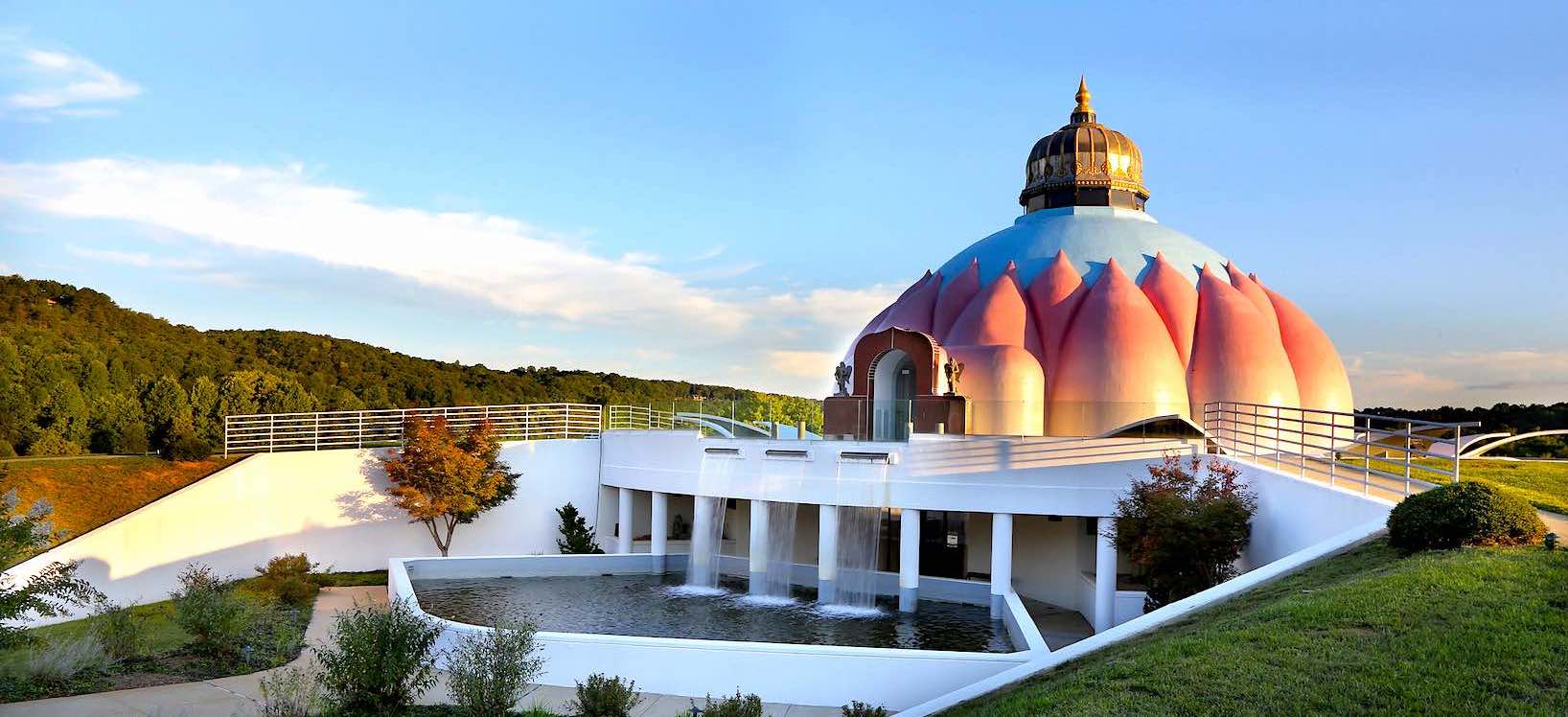
In 1982, Swami Satchidananda’s dream of a permanent shrine and symbol celebrating the unity behind the diversity of the world religions began to take form as construction began in central Virginia, USA. He called the shrine by the acronym LOTUS (Light Of Truth Universal Shrine), because he envisioned it in the shape of a lotus flower surrounded by a large lake. The lotus flower is a symbol of spiritual unfoldment in the Eastern faiths. It grows from the muddy bottom of the lake to open its petals in the sun and radiate its inner beauty; it is unstained by the mud. The LOTUS was completed and dedicated in 1986. Open to people of all faiths to meditate and pray, it utilizes the universal symbol of light as the symbol of the Divine. It is the first shrine ever built to house altars for every major faith and also faiths less well-known and those not yet known.
Many ways to receive Swami Satchidananda's Wisdom:
Want more information?
General Inquiries
Email: [email protected]
